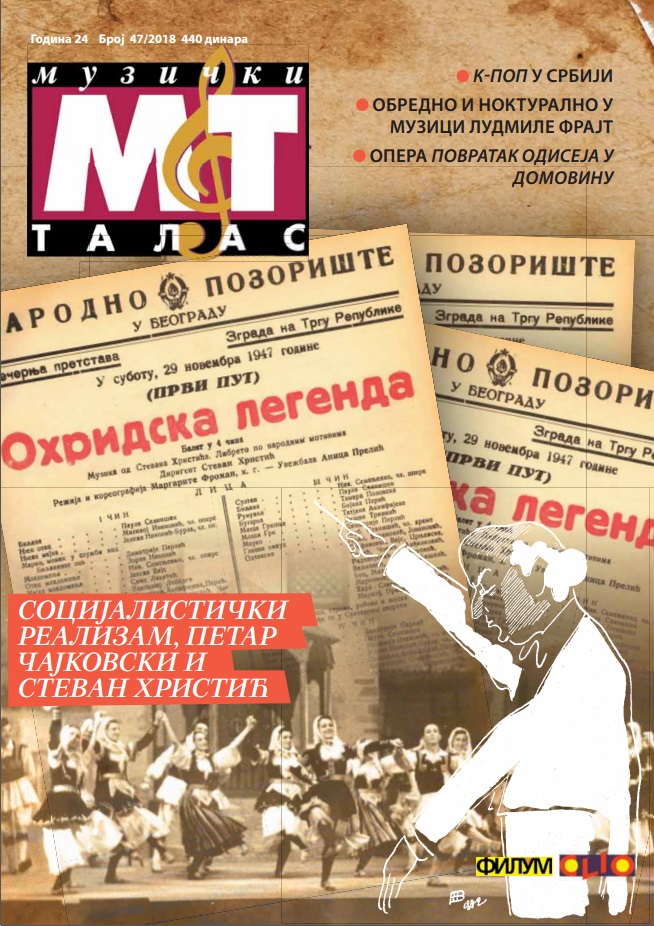Обредно и ноктурално у музици Лудмиле Фрајт
Ritual and Nocturnal Elements in Ludmila Frajt’s Music
Author(s): Slobodan VarsakovićSubject(s): Customs / Folklore, Music, Cultural Anthropology / Ethnology
Published by: Izdavačko preduzeće CLIO
Keywords: Ludmila Frajt; ritual; nocturnal; folklore; texture; avant-garde; aleatorics; moving clusters; micropolyphony
Summary/Abstract: This monographic study contains four chapters. The introductory chapter presents biographical data important for the development of Ludmila Frajt’s affinity towards Serbian cultural heritage, as well as the night-time sounds and atmosphere. Given that she approached the folklore as an acoustic phenomenon, closely related to the ambience and ritual from which it originated, in the second chapter (Evocations of rituals), in addition to the texture of selected choral works, the sound characteristics as well as the meaning of the sung text are analyzed from this aspect. Using the compositional methods of avant-garde provenance, such as aleatorics, moving clusters, micropolyphony or multimedia, Ludmila Frajt makes a very original synthesis of two seemingly distant musical worlds, folklore and avantgarde music, and, by discovering their common characteristics, turns this synthesis into something quite natural and inspirational. The sounds and ambience of the night inspired a number of Ludmila Frajt’s works, revealing the extraordinarily lyrical nature of her compositional style. Her vocal and instrumental works from this domain, discussed in the third chapter (Atmosphere of the Night) of this study, are composed of the verses of Ivo Andrić, Svetozar Brkić, the Renaissance poets from Dubrovnik, as well as her own verses. They bring different visions and experiences of the night (the state between dreams and reality, loving serenades, lullabies and thoughts during the illness), due to which the author expanded the vocal-instrumental medium with the sounds derived from the use of children’s toys, tape recorders and a typical Renaissance instrument – the lute. The aim of this study is to point out the specificity and innovativeness of the still insufficiently investigated oeuvre of Ludmila Frajt, and in that context determine its place in the development of Serbian music of the second half of the previous century.
Journal: Muzički talas
- Issue Year: 24/2018
- Issue No: 47
- Page Range: 12-39
- Page Count: 28
- Language: Serbian
- Content File-PDF

